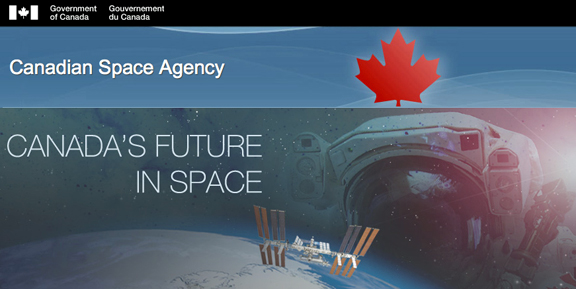[SatNews] Member of the Canadian Parliament Lawrence Toet (Elmwood-Transcona) has announced funding projects at five Canadian universities to analyze and compile measurements collected by NASA’s Soil and Moisture Active Passive (SMAP) satellite.
The SMAP mission will provide measurements of soil moisture and determine whether the ground is frozen or thawed in the Canadian boreal environment and other cold areas of the world. These measurements will help to produce global maps of soil moisture, helping scientists to better understand how changes in weather and climate affect the cycling of Earth’s water and carbon. This data could help improve weather forecasting including more accurate flood and drought predictions. With new insights into changing weather and water conditions, Canadian farmers will be able to better understand crop yields and get early warnings of soil conditions that could lead to crop-damaging pests.
• The NASA-led SMAP mission is a large-scale collaboration with scientists, governments and universities in both the United States and Canada that will provide highly accurate measurements and high resolution global maps of the Earth’s soil moisture and freeze/thaw state.
• Launched on January 31, 2015, NASA’s SMAP satellite’s combined radar and radiometer instruments are peering into the top five centimeters of soil, through clouds and moderate vegetation cover, day and night, to produce the highest resolution, most accurate soil moisture and freeze/thaw maps ever obtained from space.
• Each of the six Canadian university projects will receive a grant for as much as $280,000; the total funding for all grants is approximately $1.4 million. The projects will be undertaken over three years.
• The universities undertaking the six projects are the Université de Sherbrooke (2), the University of Guelph, the University of Manitoba, the University of Toronto, and l’Institut national de la recherche scientifique. Nineteen highly-qualified professionals at these universities will work on the projects. The work will be completed in collaboration with Environment Canada and Agriculture and Agri-Food Canada.
• These grants support Canada’s Space Policy Framework by investing in research and development activities that deliver benefits to Canadians.
• NASA plans to release the first verified soil moisture data maps by May 2016 and verified freeze/thaw maps by July 2016.
Quotes
“Agriculture is an important part of Manitoba’s economy. By providing our farmers with key data to better manage their land, we are helping to ensure the agricultural sector continues to drive productivity and prosperity in the province,"said Member of Parliament Lawrence Toet (Elmwood-Transcona).
“By supporting Canadian scientists working on this important mission, our Government is supporting Canada as a global leader in Space research and technology. By utilizing important information derived from space, Canada will be able to better manage our natural resources, especially in the farming industry, an important sector of Canada’s economy," said Industry Minister James Moore.
“This research project is gathering global data every day that will lead to new knowledge about climate and its impact on soil. These data will allow for better crop planting decisions and better flood management predictions that result in successful economies and quality of life.”
-Dr. Digvir Jayas, Vice-President (Research and International)
“We are very excited to receive this funding for the development of applications and improvement of satellite-derived soil moisture products from the SMAP mission over Canada. There are a number of applications of this research of interest to Canadians, including weather and climate forecasting, drought monitoring and flood preparedness. Grants from the Canadian Space Agency to universities are of great importance for this research. The research funding will be used to fund graduate training and the field experiments necessary to develop these applications. We are eager to begin our work.”
-Associate Professor Aaron Berg
University of Guelph



